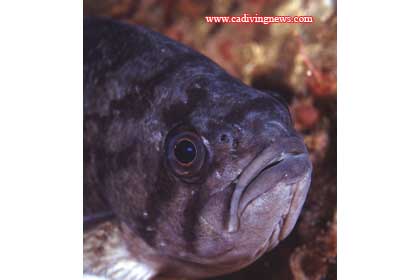When I first switched to digital a few years back I had waited for SLR cameras to get to a minimum of 5 megapixels. They hit it and I bought a nice expensive SLR camera, wrapped it in an equally expensive housing and off I went underwater to shoot away. Needless to say, it was barely adequate but it did the job. And technology moved ahead at a blindingly rapid pace. Cameras became much cheaper, more versatile, and hosted far more megapixels than I could have ever imagined.
My youngest son started diving and he wanted a camera so a bought him a Sea and Sea “point and shoot” camera with a single strobe — with 8 megapixels, far more than my measly 5.5. On a trip to Cozumel my camera went on the fritz and, not wanting to be shut out of photo opportunities, adopted (stole is more accurate a word) his camera. I was quite impressed.
Fast forward to a mere 18 months later. I considered a jump to the next and better SLR, but technology was still accelerating so rapidly that I knew as soon as I purchased a new camera it would be eclipsed several times over. Impressed by my son’s camera I cooked up a plan. I would use my son’s camera in the interim and wait until the technology settled down a bit (yeah, right). Augmenting his camera with a second strobe and a wet-swappable wide-angle I headed for the water and started shooting away. Wow! Again, I was impressed.
Fast forward another 18 months and I found myself purchasing the Sea and Sea DX1G “compact” camera system (I hate the term “point-and-shoot”), again as an interim camera. It is 10 megapixels and loaded with features.
Very pleased with the DX1G, I now own a DX2G and further distanced from the idea of an SLR. Why? I can do 90 percent of what I want to with an SLR in a much more compact and less expensive system — yet it is jammed packed with features.
I really enjoy the compactness of this camera. In a carry-on case I am able to carry two cameras (the new camera and old as a backup), three compact strobes (again thinking backup), a supplemental wide-angle lens, two arm systems and all the odds and ends I might need. The fact that I can get this all into a carry-on case impresses the hell out of me.
I love the wet-swappable lens feature of this camera. While this is not unique to compact systems, it is, as far as I know, not available in SLR systems. Underwater with a twist I can put on the optional 16mm wide-angle lens and with a twist be back to “normal.” The term normal is, however, relative with this camera. Even without the supplemental wide-angle lens, the wide-angle feature of this lens is very good at 24mm. The macro is even more impressive focusing down to less than 1/2″ in macro mode.
The new DX2G is a whopping 12 megapixels. Like its predecessor, it can shoot in higher quality RAW mode, a feature not found in many compact cameras. But with this newer model you can shoot up to 5 RAW photos without waiting for camera to catch up.
Speaking of not having to wait for the camera, the shutter lag on this camera is only .1, the best in the business. Refocus and you can catch that flitting fish in the act.
Of course the camera has all the usual features now common on most digital camera systems: Auto focus, manual and auto white balance, etc. But there are a few additional featured worth mentioning. The first is the Sea and Sea (SS) underwater shooting mode. It automatically adjusts color temperatures and other features to optimum underwater shooting. Another feature is the “My Setting” modes — customize up to two different settings and your camera will remember what you want when turned to that setting. You can shoot in program mode, aperture priority mode, and manual mode, a setting usually reserved only for SLR cameras.
Sea and Sea has just recently paired this camera as a system with its compact YS-01 and a compact arm combo for a unit that is affordable (for a camera of this power) and very useful. The “Sport Package” comes complete with a carrying case where it all fits in nicely with room to spare. The entire kit is about the size of small briefcase.
As a test, even before I personally used the camera but understood some of the features, handed the camera to a rank amateur for his first underwater photos. With only the most rudimentary instructions (get close, shoot up, autofocus, etc.) and the camera in SS auto mode and strobe in TTL mode, I sent him off clicking and he came back with excellent images (see sample on this page.) Later, in my own testing I found this an especially easy camera to use in the SS auto mode with TTL on the strobe but also versatile enough for this experienced photographer to use it in custom settings.
I highly recommend this “Sport Package” for the beginner or intermediate underwater photographer that wants a system that can easily be added to. I recommend the wet-swapple wide-angle lens. Then add a second strobe, one of the Sea and Sea compact models and augment the strobe arm to accommodate the new strobe. All of this will still fit into the soft case provided with the original package.
You can do so much with this system right out of the box and yet it will grow with you into a professional quality package — all the time delivering excellent results.
For more information visit www.seaandsea.com.










